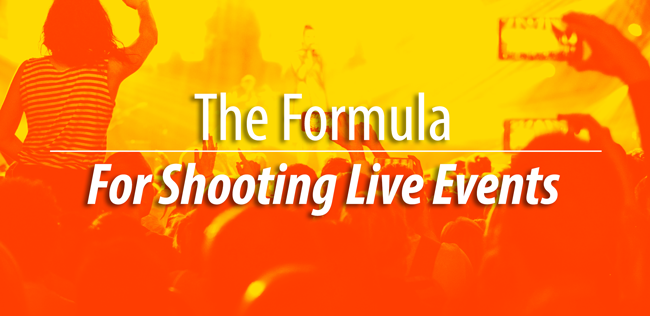Many people assume that recording a live event is as simple as setting up a video camera on a tripod and then sitting down to watch the event. While you will get a recording of the event, you won’t create interesting, engaging content that people will want to watch again and again. There is nothing quite like being at the actual event. However, there are a few simple strategies that will help you recreate the experience for the viewers. The following explains the formula for shooting live events.
Prepare before the event
Shooting a live event requires proper preparation to ensure a smooth recording with minimal technical issues. Make a checklist of all required equipment and other key steps you must take before the event, and go through it before you leave for the event.
Use multiple cameras and a switcher
The easiest way to shoot a live event and limit your post-production work is to shoot with multiple cameras and a switcher so you can edit as you go. Ideally, use a wide-angle lens for one camera and medium-range or telephoto lenses for the other two cameras. This set up will allow you to get a mix of wide, medium, and close-up shots to tell the whole story of the event. If you aren’t able to shoot with multiple cameras, switching equipment, and a host of cables, shoot with two cameras. If you’re shooting a live event by yourself, try to shoot the event twice.
It may seem like a lot of work for a single event, but shooting with multiple cameras and a switcher creates a much more professional final video. When a cameraman is working on his own, he tends to either shoot a lot of static shots or move the camera back and forth rapidly in an attempt to capture as much of the action as possible. Regardless of the number of cameras, move them in a meaningful way, letting the subject’s movements dictate the action instead of trying to create your own action.
Shoot B-roll footage
B-roll footage is what’s happening during the event away from the main action. For example, during a concert, B-roll footage may include the audience, details on the stage (i.e. a violin bow, the conductor’s baton), and details of the venue (i.e. a chandelier). B-roll footage provides filler amidst the main action to tell a more complete story. It also gives you the flexibility to cover up mistakes and create smoother transitions during post-production.
Don’t script what you can’t control
Creating an outline for yourself before an event is critical for making sure you capture all the most important moments and get some B-roll footage. However, when you’re shooting a live event, you’ll never be in full control. At any moment, something unexpected may occur, such as an impromptu speech. Stay flexible while shooting so you can alter your game plan and catch the unplanned moments as they occur.
Shooting live events takes practice, patience, and trial and error. Even when you have a solid set up with multiple cameras and you edit the content afterward, most likely your first few attempts will still be fairly rough. Learn from your mistakes and strive to make each live event recording better than your previous recording.
